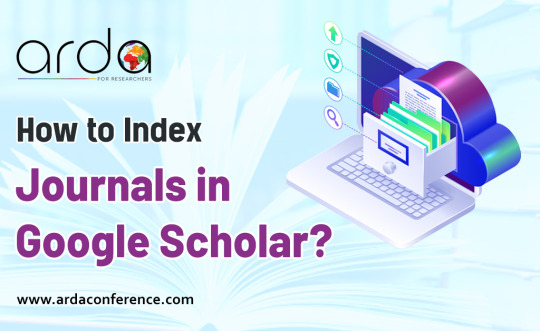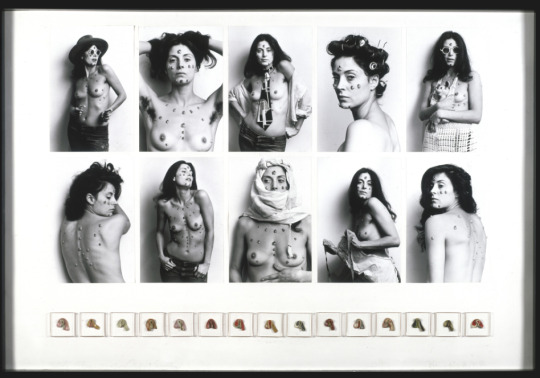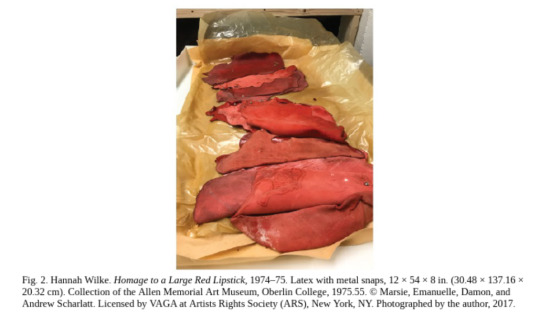#googlescholar
Explore tagged Tumblr posts
Text

🚀How to use Google Scholar like A Pro
Want to take your research game to the next level? 📈 Don't keep these powerful Google Scholar hacks to yourself - share the knowledge!
Follow @everythingaboutbiotech for more useful post.
#GoogleScholar#ResearchSkills#PhDLife#AcadTwitter#CitationGoals#LitReview#InfoPro#CiteRight#ScholarlyPapers#FreeArticles#KnowledgeIsPower#ScienceTwitter#AcadChatter
26 notes
·
View notes
Text
🔎 Las mejores técnicas y métodos de investigación digital que todo estudiante y profesional debe conocer

En la era digital, saber investigar no es solo una habilidad, ¡es una herramienta de poder! Ya no basta con saber usar Google. Hoy te mostraré un abanico de técnicas y métodos de investigación digital que te convertirán en un verdadero experto para encontrar, analizar y usar información como todo un profesional. 📌 ¿Qué es la investigación digital? Es el proceso de búsqueda, recopilación, evaluación y uso de información disponible en medios digitales (como internet, bases de datos, redes sociales, plataformas académicas, etc.) para resolver problemas, hacer proyectos, tomar decisiones o simplemente aprender más sobre un tema. 🧠 Principales técnicas de investigación digital 🔍 1. Búsqueda avanzada en motores de búsqueda - Uso de operadores como site:, filetype:, "palabra exacta" o -excluir. - Filtros por fecha, país o tipo de contenido. 📚 2. Acceso a bases de datos académicas - Google Scholar - Scielo - Redalyc - JSTOR (algunas partes gratuitas) 🤖 3. Uso de inteligencia artificial para recopilar información - Herramientas como asistentes inteligentes, bases de datos con IA o plataformas que analizan grandes volúmenes de datos. 🔗 4. Curación de contenidos - Reunir, seleccionar y compartir la mejor información de diferentes fuentes. - Plataformas como Feedly, Flipboard, Wakelet o Pocket ayudan mucho. 💬 5. Observación y análisis en redes sociales - Estudio de tendencias, comportamientos o respuestas de usuarios. - Uso de hashtags, herramientas de análisis y métricas. 🧪 Métodos de investigación más usados en entornos digitales 📊 Cuantitativo digital - Encuestas en línea (Google Forms, Typeform) - Formularios con respuestas medibles - Recolección de datos desde plataformas sociales 🧾 Cualitativo digital - Entrevistas por videollamada - Grupos focales en salas virtuales - Análisis de contenido en redes o blogs 🧭 Método etnográfico virtual - Observación de comunidades digitales como foros, videojuegos o redes. - Exploración de costumbres, lenguaje, interacción de usuarios. 📈 Análisis de big data - Explotación de grandes volúmenes de datos desde redes, plataformas o software específico. - Se aplica en marketing, salud, educación, política, etc. ✅ Recomendaciones para una buena investigación digital - Verifica la fuente: Asegúrate de que sea confiable, actualizada y con autoría clara. - Organiza la información: Usa herramientas como Notion, Evernote o Google Docs. - Evita el plagio: Siempre cita o parafrasea correctamente. - Contrasta la información: No te quedes con una sola fuente. 🚀 Bonus: Herramientas digitales que te facilitarán todo - Zotero / Mendeley: Para organizar y citar fuentes. - Google Trends: Para conocer qué está buscando la gente. - Chatbots académicos: Para hacer lluvia de ideas o aclarar conceptos. - Trello / Notion: Para planificar y seguir tu proyecto paso a paso. Read the full article
#análisisdedatosdigitales#appsparainvestigar#bigdataeninvestigación#búsquedaavanzadaGoogle#cómobuscarenbasesdedatos#cómohacerunainvestigacióndigital#cómoinvestigareninternet#curacióndecontenidos#encuestasonline#entrevistasvirtuales#estrategiasdebúsquedaenlínea#formulariosdigitales#fuentesconfiablesinternet#GoogleScholar#guíadeinvestigacióndigital#herramientasdeinvestigacióndigital#herramientasparatesis#inteligenciaartificialparainvestigar#investigaciónacadémicaonline#investigacióncualitativadigital#investigacióncuantitativadigital#investigacióndigital#investigaciónenredessociales#investigaciónparaproyectos#métodoscualitativosdigitales#métodoscuantitativosdigitales#métodosdeinvestigacióndigital#recursosparaestudiantes#Scielo#técnicasdeinvestigacióndigital
0 notes
Text
How to Index Articles in Google Scholar?
When Google Scholar was launched in November 2004, it brought the simplicity that the Google search engine offers to the world of academia and revolutionized the way researchers and the public researched, found and consumed academic research.
Until then, academic databases were solely dependent on lists from hand-picked sources (which were normally scientific journals). As opposed to this, Google Scholar crawled the internet (using the automated means of indexing that Google’s algorithms are so well-known for) and indexed every document that had a seemingly academic structure to it.
This inclusive approach is what has given Google Scholar a potentially more comprehensive coverage of the scientific and academic literature compared to Web of Science (WoS) and Scopus, which are arguably the two most prominent multidisciplinary databases with selective, journal-based inclusion policies.
Eager to Index Research articles in Google Scholar? Then, check this blog for all crucial tips on how to do so.
#googlescholar#indexing#publishing#journals#research papers#education#academic#researchers#phd papers#scopus#fast publishing#research
0 notes
Photo

Cómo aprovechar al máximo Google Scholar https://bit.ly/47jqq67
0 notes
Video
youtube
A Comprehensive Guide to Finding Genuine Content on Google Scholar for L...
#youtube#A Comprehensive Guide to Finding Genuine Content on Google Scholar for Literature Review. LiteratureReview AuthenticContent GoogleScholar A
0 notes
Note
it should probably be noted that dorothy dandridge was dubbed in porgy and bess by adele addison and in carmen jones by marilyn horne, although she was an excellent singer and much has been said about the decision particularly in carmen jones to assemble a cast of established singers and dub most of them, including harry belafonte and diahann carroll (here's an interesting article about it https://go.gale.com/ps/i.do?p=LitRC&u=googlescholar&id=GALE%7CA100808357&v=2.1&it=r&asid=4f33778e i'm not totally sure if that link will work so here's a pdf also https://web.archive.org/web/20170809053434id_/http://blackvistas.com/film/media/pdfs/carmen_dubbing.pdf)
"Black faces, white voices: the politics of dubbing in Carmen Jones"
Thank you so much for this article, Anon. Swooning over hot women aside, I am first and foremost here for the educational value, and I shall tuck into this article with gusto. Even more fun, the article was published in Velvet Light Trap, by the University of Texas Press, and your beloved tournament host also belongs to the wonderful world of academic publishing.
Her info shall be updated to reflect this information, and I shall ponder the implications another time.
Dorothy Dandridge vs. Moira Shearer
10 notes
·
View notes
Text
Political Discussion and Political Interest
I chose to look at The Outlook on Life Survey (OOL) for my research project. The variable that first caught my interest in this study was government and political interest. I’m sure that there are many factors that contribute to an individual’s interest and degree of interest on this topic. However, while I was scrolling through the other questions, I came across the variable of frequency of political discussion with family and friends, and wondered what impact, if any these two would have on each other. This variable caught my attention because I recalled that there is much research suggesting that eating meals as a family is a strong predictor of a child’s academic success. It got me wondering if interaction (discussion), such as ones you would encounter during family meals, would have a similar impact on a person’s interest in politics. I decided I am most interested to see if the frequency of political discussion is related to an individual’s interest in politics.
My hypothesis would be that there is a positive correlation between the two variables (more political discussion would relate to a higher level of political interest). This was confirmed by my search on googlescholar. I used search terms such as “civic talk and political interest” and “family discussion and political interest” to locate articles that I thought would align most with my hypothesis. The breadth of research, including a few articles by Casey Klofstad, had a pattern of findings that indicated a positive correlation between the two variables. Some research, such as the paper How feeling free to talk affects ordinary political conversation, purposeful argumentation, and civic participation, dove deeper into other variables such as the type of “civic talk” and feeling free to talk without being judged and how much those also affected political interest. However, my research project is just looking to see if I can confirm the positive correlation between the two variables that the breadth of research indicates.
Klofstad, C. (2010). Civic talk: Peers, politics, and the future of democracy. Temple University Press.
McIntosh, H., Hart, D., & Youniss, J. (2007). The influence of family political discussion on youth civic development: Which parent qualities matter?. PS: Political Science & Politics, 40(3), 495-499.
Wyatt, R. O., Kim, J., & Katz, E. (2000). How feeling free to talk affects ordinary political conversation, purposeful argumentation, and civic participation. Journalism & Mass Communication Quarterly, 77(1), 99-114.
Klofstad, C. A. (2010). The lasting effect of civic talk on civic participation: Evidence from a panel study. Social Forces, 88(5), 2353-2375.
2 notes
·
View notes
Text
this genocide lie is tired as fuck: CHRISTOPHER JON BJERKNES’ “THE JEWISH GENOCIDE OF ARMENIAN CHRISTIANS”.
the funniest part of this was seeing the one and only comment responding to it be “ugh this is so antisemitic don’t you know it’s ISRAEL committing genocide not the jews?”
the table of contents:

a response to his BS: https://go.gale.com/ps/i.do?id=GALE%7CA267716679&sid=googleScholar&v=2.1&it=r&linkaccess=abs&issn=23250895&p=AONE&sw=w&userGroupName=anon%7E3dd06f12&aty=open-web-entry
taken from the link:
Abstract:
Christopher Jon Bjerkness is the author of Albert Einstein: The Incorrigible Plagiarist and The Jewish Genocide of Armenian Christians. He maintains the website www.jewishracism.com, a site "dedicated to protecting all Jews from the antisemitism and inhumanity of racist Jews." His work is indicative of a new generation of genocide exploitation.
this book is from 2016 and 620 pages long.
2 notes
·
View notes
Text
8. Affect, emotion, Kratos
God of War (2018) is a video game made by Santa Monica Studio(Sony Interactive Entertainment) and it is the eighth installment in the God of War series. Kratos is still the protagonist in this installment, but different from killing every Greek god in all the previous sequels, this time he becomes the father and a man who buried all his past and seeks peace. “The public of video games has witnessed the evolution of this medium and has seen how the content of the games that occupied the shelves of the stores was increasingly gaining in quality and narrative complexity.”(Pablo Medina, Kratos, Mythical Father. 2020) As a player who has had this sequel company since I was a little boy, I feel something when controlling the father Kratos, we grew up together. To me, playing video games is not all about defeating your virtual enemy anymore, it is about mapping myself to the character and feeling the aesthetic affect of the game.
youtube
This is the part I think can represent all the affect and emotions of this installment, in this part, Kratos had no choice but to retrieve the weapon that represents his cruel past, you can tell his hands are shaking, and the movement is hesitant. This is one of the biggest emotional moments in video game history, an old man retrieves his past to save his son. If the player has never played any other God of War sequels before and their reaction will just be “Oh, dual blade”, but the player who knows the past of Kratos “(Crying, can’t say a single word) “When we talk about reaching the heart of the audience, we do not mean just selling tickets. This is the logical consequence of the impact and thrill caused by art.” (Pablo Medina, 2020) As stories started to pile up, games are more than games than ever, it’s about the “true story” that happened in the virtual world that company us for decades, and maybe more.
Bibliography:
Fig1. RabidRetrospectGames (2018) Kratos gets The Blades of Chaos - God of War 4 (PS4 Pro) - God of War 2018. https://www.youtube.com/watch?v=HR9TzSFZ_-E.
Medina, Pablo. "Kratos, Mythical Father." Journal of Comparative Literature and Aesthetics, vol. 43, no. 4, winter 2020, pp. 90+. Gale Literature Resource Center, link.gale.com/apps/doc/A643395609/LitRC?u=anon~ad6ebbcf&sid=googleScholar&xid=6a5a6a6e. Accessed 31 Dec. 2024.
1 note
·
View note
Text
Love, Here's The Deal - Document - Gale Academic OneFile
https://go.gale.com/ps/i.do?p=AONE&u=googlescholar&id=GALE|A260940214&v=2.1&it=r&sid=googleScholar&asid=406e607b
0 notes
Text
SOURCES USED
Tilly, Bryn. “Q&A with Stephen Thrower.” Cult Projections, Cult Projections, 24 Feb. 2016, www.cultprojections.com/interviews/qa-with-stephen-thrower.
Krancer, Brooke. “Horror Cinema, Trauma, and the US in Crisis in the 1970s.” ArcGIS StoryMaps, Esri, 9 July 2022, storymaps.arcgis.com/stories/68defbc42de0437184087a4afd070ae3.
“Teri McMinn on ‘The Texas Chain Saw Massacre.’” YouTube, YouTube, 3 Oct. 2016, www.youtube.com/watch?v=V-4vqPAmmvg&ab_channel=filmSCHOOLarchive.
“‘The Fear of God: The Making of the Exorcist’ Documentary (BBC) (1973).” YouTube, YouTube, 6 Oct. 2023, www.youtube.com/watch?v=mZQw4k-3Uno&ab_channel=TheJDPChannel.
Men, Women, and Chain Saws: Gender in the Modern Horror Film - Updated Edition on JSTOR, www.jstor.org/stable/j.ctvc7776m. Accessed 4 May 2024.
Sexton, Jamie. "US 'indie-horror': critical reception, genre construction, and suspect hybridity." Cinema Journal, vol. 51, no. 2, winter 2012, pp. 67+. Gale Literature Resource Center, link.gale.com/apps/doc/A281461822/LitRC?u=mlin_s_abingpl&sid=googleScholar&xid=07219b77. Accessed 4 May 2024.
The Texas Chainsaw Massacre: Our Collective Nightmare, epublications.regis.edu/cgi/viewcontent.cgi?article=1497&context=theses. Accessed 4 May 2024.
0 notes
Text
How To Index Journals/Articles In Google Scholar?

Discover the secrets to indexing your articles in Google Scholar! Learn how to get your research papers discoverable in just a few easy steps.
Get it here: https://www.ardaconference.com/blog/how-to-index-articles-in-google-scholar
If you're looking to get your research work published in Google Scholar journals but are afraid that you'll be turned down during the peer-review process, you should seek the professional research writing, editing and publication support of ARDA Conference.
#researchstudy#journalpaper#journal#researchanddevelopment#education#researchers#researchpaper#journalpublication#publishers#Academicians#research#google#GoogleScholar#articles#peerreviewedjournals#peerreview
0 notes
Link
Google Scholar es un motor de búsqueda desarrollado por Google que se ha convertido en una herramienta imprescindible para la comunidad académica y científica. Su principal objetivo es facilitar la búsqueda de contenido científico académico y bibliografías, proporcionando acceso rápido y fácil a investigaciones y publicaciones relevantes.
0 notes
Text
Works Cited
Abramowitz, Rachel. “Giving birth to ‘Juno’.” Los Angeles Times, 6 December 2007, https://www.latimes.com/archives/la-xpm-2007-dec-06-et-cody6-story.html.
Alonso Palombi, Alba. “The New Femme Fatale in Jennifer’s Body.” Reinvention: an International Journal of Undergraduate Research, special issue of Reeling and Writhing: Intertextuality and Myth, vol. 15, no. 1, 2022, https://doi.org/10.31273/reinvention.v15iS1.881.
Chusna, Aidatul, and Shofi Mahmudah. “Female Monsters: Figuring Female Transgression in Jennifer’s Body (2009) and The Witch (2013).” Humaniora, vol. 30, no. 1, 2018, pp. 10-16, http://dx.doi.org/10.22146/jh.31499.
Clover, Carol J. “Her Body, Himself: Gender in the Slasher Film.” Horror, the Film Reader, edited by Mark Jancovich, Taylor & Francis Group, 2001, pp. 77-89. ProQuest Ebook Central, https://ebookcentral.proquest.com/lib/emerson/detail.action?docID=180062.
Gratz, Eleanor. “Ladies of the Night, What Pop Music They Make: The Monstrous Adolescent in Jennifer’s Body and Blue My Mind.” Monsters and Monstrosity in Media: Reflections on Vulnerability, edited by Yeojin Kim and Shane Carreon, Vernon Press, 2024, pp. 119-136.
Truitt, Brian. "'Lisa Frankenstein,' 'Poor Things' reclaim author's feminist intent." USA Today, 13 Feb. 2024, p. 04D. Gale Academic OneFile, link.gale.com/apps/doc/A782296830/AONE?u=mlin_oweb&sid=googleScholar&xid=38a71299.
Williams, Linda. “When the Woman Looks.” Horror, the Film Reader, edited by Mark Jancovich, Taylor & Francis Group, 2001, pp. 61-66. ProQuest Ebook Central, https://ebookcentral.proquest.com/lib/emerson/detail.action?docID=180062.
0 notes
Text
Artist Research: Hannah Wilke
"Wilke used the various mediums of photography, performance, sculpture, and video to examine and challenge prevailing notions of femininity, feminism, and sexuality. She was one of the first artists to use vaginal imagery in her work with the purpose of directly engaging with feminist issues. During the late 1950s through the early 1970s, Wilke worked on creating a type of female iconography based on the body, constructing abstract, organic forms that closely resembled female genitalia. She displayed these forms on the floor or wall in a highly organized and repetitious manner that recalled Minimalism. During the 1970s, she began to use her own body for performance pieces that she called her "performalist self-portraits." These performances, immortalized on video or in photographs, confront erotic stereotypes by calling attention to and making ironic the conventional gestures, poses, and attributes of the female body."
https://www.guggenheim.org/artwork/artist/hannah-wilke

"Wilke first performed S.O.S.—Starification Object Series for the public in 1975. Visitors were given colored gum, which they were asked to chew and then return to the artist, who, topless, stretched and folded the pliable wads into small, labia-shaped sculptures and stuck them to her skin. These handwrought anatomical forms have been read as both sensual fetishes and unsightly scars emblematic of the power, and also the stigma, of the female sex. Interested in how these transitory actions could outlive the moment, Wilke posed for photographs for the S.O.S. series, making what she called “performalist self-portraits.”"
https://www.moma.org/collection/works/102432
"'Who has the guts to deal with cunts?' asked sculptor Hannah Wilke in 1973"
"Wilke wanted to shock a complacent society that she perceived was ruled by prejudice and fear and transform its negative attitudes towards sexuality, particularly women's sexuality"
"They related female body imagery to concerns that were debated within the contemporary Women's Liberation Movement: the representation of women's bodies, the nature of feminine sexuality, and the existence of a universal feminine sensibility. There is a trajectory in these critical perspectives that parallels a move in radical feminist concerns from forthright exploration of women's sexuality, including lesbianism, to theorization of an inherent and unified feminine sensibility that assumes heterosexuality." :(
Thompson, M. H. (2006). Agreeable objects and angry paintings: "female imagery" in art by Hannah Wilke and Louise Fishman, 1970-1973. Genders, (43), NA. https://link.gale.com/apps/doc/A179660933/AONE?u=qut&sid=googleScholar&xid=d7d4632a

Curators perspective on Homage to a Large Red Lipstick, as fallen into disrepair during museum storage:
"A “cure” for Wilke’s Homage to a Large Red Lipstick , given the extent of its deterioration, seems highly unlikely. In the meantime, it sits in the basement, visible to no one, gathering proverbial dust, while— to add insult to injury— Oldenburg’s works, of which the museum owns more than sixty, are regularly exhibited and used in teaching. Dissatisfied with leaving Homage in obscurity after I had seen it for myself, I wondered whether Wilke’s practice might have allowed for entropy, change, decay, and even death in the case of her sculptural works— whether, in other words, some aspect of her work might justify exhibiting Homage as it is. Wilke, who died from lymphoma in 1993, cannot be consulted, as standard curatorial practice today would demand, nor do we have evidence that she considered this particular proposition while she was still alive."
"Wilke created each petal for her sculptures by using a cup to pour a thin layer of tinted liquid latex, which she likened to “pancake batter,” onto a custom-made seventeen-foot plaster of Paris board on the floor of her studio."
Hölling, H. B. (Ed.). (2022). Object--event-- performance : Art, materiality, and continuity since the 1960s. Bard Graduate Center, Exhibitions Department. https://ebookcentral.proquest.com/lib/qut/reader.action?docID=7207363&ppg=99
REFLECTION- could a work be made in collaboration with actual pancake batter? a photographic/portraiture series perhaps? Or other food items, icing, bread, mouldy food, lollies? Back to my earlier work references women as consumerist objects, pig meat, etc.
Wilkes latex work reminds me of folded crepes. Perhaps red, mouldy crepes folded in various bodily forms would be interesting?
0 notes
Text
Blog 08: Sense-Making of Nature Interpretation
Hey everyone, and welcome back for another blog post. In today’s prompt we are discussing the most amazing things we know about nature. For me, what comes to mind first would be the magnificent northern lights. Though I have never had the chance to see them in person, I can tell how breathtaking they would be just from pictures, videos, and descriptions.

The northern lights are scientifically known as aurora borealis, meaning the light of dawn. They can be seen from the northern hemisphere in regions such as Canada, Alaska, Russia, Norway, and Sweden since these places cover the auroral oval (Waldek & Dobrijevic, 2022). However, since auroral activity is not always consistent, the oval can shift. An aurora refers to a natural light display projected in the sky (National Geographic, 2023). They can appear when charged solar wind particles from the sun approach the Earth as solar wind. These particles are able to interact with the Earth’s magnetic field (National Geographic, 2023). Most of this solar wind gets blocked by the magnetosphere, but some ions do get trapped. The area where ions are trapped in the atmosphere is called the ionosphere. Within the ionosphere, nitrogen and oxygen atoms from the Earth’s atmosphere collide (National Geographic, 2023). The energy from this collision creates the fascinating glowing lights we see as the northern lights. The colours of an aurora are influenced by altitude, as well as the atoms that are involved (National Geographic, 2023). oxygen atoms tend to produce a red colour, however this is rare as it happens only when the ions are striked high in the atmosphere. Commonly, oxygen produces green/yellow auroras. When hydrogen and helium atoms are striked, blue and purple hues can be seen (National Geographic, 2023).
Auroras have a deep meaning in several cultures as well. In Iceland, it is thought that looking at the northern lights directly would cause your child to become cross-eyed (Berg, 2023). In Finland, the Sami Indigenous people believe that the lights must be respected (Berg, 2023). In their culture, the auroras are considered to be living beings, and that misfortune would come upon you if you were to disrespect them (Berg, 2023). As I have mentioned before in Blog 7, music is also an important part of the Sami Indigenous culture as they communicate through song, by singing yoiks (Gray et al., 2001).
The northern lights are just one of nature’s several wonders. As interpreters, it is necessary for us to appreciate and understand the elements of nature in order to share our findings with our audiences (Beck et al., 2018). By surrounding ourselves in nature’s beauty, we can build a profound connection to it. As I continue to grow as an interpreter, I hope to both inspire and inform others about culture & nature (Beck et al., 2018).
References
Aurora - National Geographic. Retrieved 18 March 2024, from https://education.nationalgeographic.org/resource/aurora
Beck, L., Cable, T. T., & Knudson, D. M. (2018). Interpreting Cultural and Natural Heritage: For A Better World. Sagamore Publishing.
Berg, B. (2023, March 28). What the Northern Lights Mean to Different Cultures - AFAR. AFAR Media. https://www.afar.com/magazine/what-the-northern-lights-mean-to-different-cultures
Gray, P. M., Krause, B., Atema, J., Payne, R., Krumhansl, C., & Baptista, L. (2001). The Music of Nature and the Nature of Music. Science, 291(5501), 52–52. https://go.gale.com/ps/i.do?p=AONE&sw=w&issn=00368075&v=2.1&it=r&id=GALE%7CA69270354&sid=googleScholar&linkaccess=abs
Waldek, S., & Dobrijevic, D. (2022, March 13). Aurora Borealis: What Causes The Northern Lights & Where to See Them. Space.Com. https://www.space.com/15139-northern-lights-auroras-earth-facts-sdcmp.html
0 notes